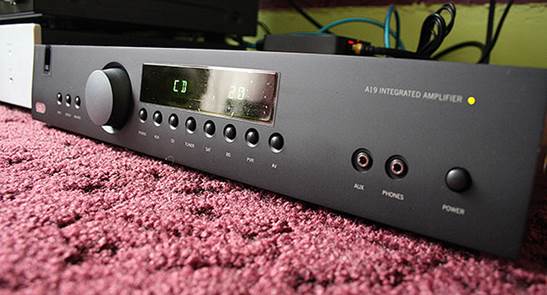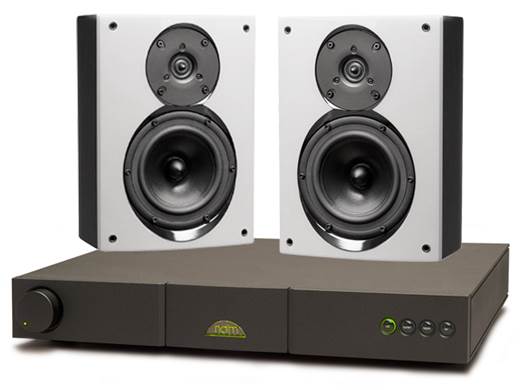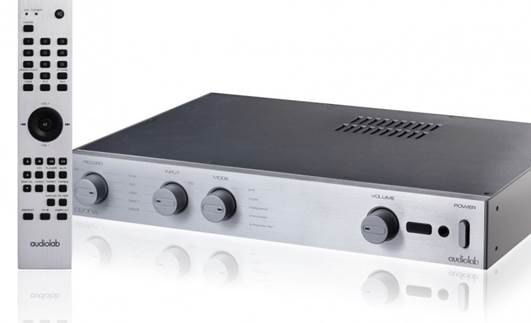The winner
Arcam FMJ A19 - Rating: 5/5
It was a tough fight, this, but get the
partnering kit right and the Arcam A19 emerges as a stunning all-rounder at a
bargain price.
It’s been a while since we’ve seen Arcam
come out on top in a stereo amplifier group test, and it’s great to see this
British company back on its A-game in this arena. The Arcam FMJ A19 blew us
away with its large, authoritative sound and impressive handling of dynamics,
trumping more expensive amps on test when it came to timing and subtlety.
Brimming with detail and great clarity from top to bottom, the Arcam A19 is a
solid all-round performer, and all at a price that makes it feel like a bit of
a bargain.

The
A19 wowed us with its clarity, depth and fantastic solidity
This does mean that our 2012 Award winner
at this price point, the Cyrus 6a, has been hoisted from its throne, albeit
while keeping its five stars. And so it should. The 6a is still a fantastic
amp, with its expert precision and spacious presentation, not to mention its
small footprint, bound to make it appealing to many. Unfortunately, it just
fell short when it came to the pure size of sound when compared to the
large-scale presentation of the Arcam.
The competition's still strong
Naim’s Nait 5i has also kept its five
stars, still impressing us with its solid, weighty sound, particularly in the
lower frequencies, and its handling of dynamics and rhythm. However, its more
forward sound gives it a noticeably smaller soundstage to that of the Arcam,
and at $359 more, that’s a considerable difference in price.

Naim’s
Nait 5i has also kept its five stars, still impressing us with its solid,
weighty sound, particularly in the lower frequencies, and its handling of
dynamics and rhythm.
Onix made a respectable return to our pages
with its A-25 stereo amp, complete with standout styling, sweeter than sweet
high-end and a delicate midrange. Unfortunately its concentration in these
areas left the low-end lacking, leaving the overall presentation a little
lightweight.
One amp that didn’t suffer with a lack of
bass was the Pioneer A-70, which packs an assuredly chunky low-end and a large
sound to match its hefty physical appearance. There’s a great clarity here, but
it lacks the composure to handle more complex parts of a track with confidence,
ultimately losing it a star.
The Arcam FMJ A19 blew us away with
its authoritative sound and impressive dynamics, and bettered more expensive
amps for subtlety
The remaining two amplifiers also scored a
respectable four stars. The Rotel might have left us wanting more in terms of
detail and dynamics, but it’s also the cheapest amp on test here, and one of
the best featured – a factor definitely not to be overlooked.
Audiolab’s 8200A should have been in its
comfort zone paired with the company's Award-winning 8200CD CD player, but it
somehow fell a bit short. It packed in more detail than the Rotel but its
overall sound puts precision above rhythmic drive, making it sound too clinical
and matter of fact.

Audiolab’s
8200A should have been in its comfort zone paired with the company's
Award-winning 8200CD CD player, but it somehow fell a bit short
It could do with taking a few notes from
the Arcam. The A19's warm, inviting sound sits just on the relaxed side of
neutral. It won’t break the bank but it will immediately improve a more budget
hi-fi setup immeasurably.
Buying advice
How to decide which amp to get Amplifiers
don’t tend to have as strong a sonic character as your speakers, but they
affect the way the system sounds in a fundamental way. It pays to take care in
choosing one.
If possible, always listen to an amplifier
with your speakers. If you can’t take yours along to the dealer, try to get
them to use alternative speakers that are close as possible to what you have.
The source is likely to be less of an issue as long as it’s relatively even
handed in the way it performs.
Other than sound, make a list of features
you need. If you have a complex system you’ll need an amp with lots of inputs.
Got a record player? Take a look at amps with phono stages or consider an
outboard phono unit. Similarly, a built-in DAC would be useful for digital
based set-ups.